Diagonal fans make filter fans more efficient
Filter fans are a combination of fan and dust filter. They are well suited for economically dissipating heat loads from switch cabinets or electronics enclosures. A new generation of equipment is now providing a breath of fresh air – in more ways than one – in the field of housing and control cabinet technology: with a flat design, good pressure stability, constant performance and reduced noise characteristics. Moreover, tool-free (and therefore time-saving) installation makes it convenient for the user. Diagonal fans which can be perfectly integrated into the application make an essential contribution here. These combine the characteristics of conventional axial fans with those of centrifugal fans.
To ensure that electronics work reliably, the residual heat generated from the power loss has to be dissipated as efficiently as possibly. In practical use, it soon becomes clear that there are often great differences in the performance of the filter fans used for this purpose. The strengths and weaknesses of the different fan concepts are particularly evident when there is a high back-pressure, e.g. due to a high density of components or dirt accumulation in the filter mats.
More pressure and higher air flow
Usually, filter fans employ axial fans, in which the air flows parallel to the axis of rotation of the impeller. These fans displace large volumes of air, but with low static pressure. Outside the right working range, i.e. with increasing pressure rise beyond the saddle point, the noise level of axial fans rises substantially as the air flow at the impeller shears and forms turbulence. This causes the efficiency of the fan to drop. For this reason, centrifugal fans are usually the right choice for applications requiring greater pressure stability. Here, the air flows across the impeller radially to the axis of rotation. Because the complete air flow leaves the impeller at the outer diameter, the greater speed encountered there is fed into energy, meaning that the centrifugal impeller is able to generate a greater pressure increase. Motor and fan specialist ebm-papst has married the benefits of these two fan concepts in a new line of diagonal fans. The filter fans, which are configured for an air performance ranging from 20 to 900 cubic metres per hour, are flatter than earlier models featuring axial fans, yet they have the same installation dimensions and generate a greater air flow at higher back-pressure, with better noise characteristics and lower power input. This new generation of fans has been specially developed by ebm-papst for the Rittal TopTherm line of filter fans.
Longer service intervals and substantial energy savings
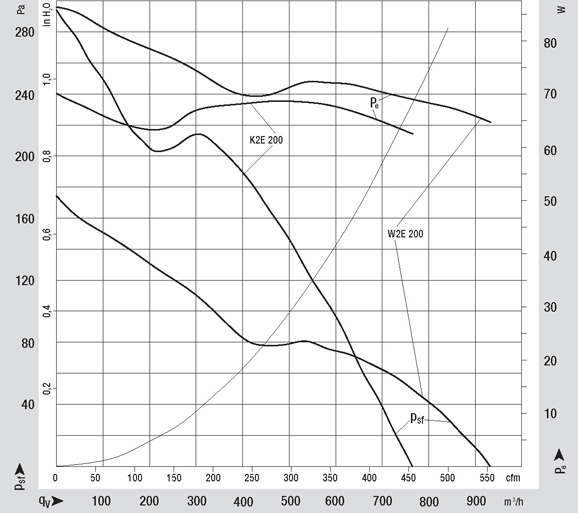
The characteristics curve for the diagonal fan shows a substantially higher pressure increase compared to axial fans. And yet the power input is lower despite the higher air volume.
The key to this is the so-called diagonal fan employed in the new generation of filter fans. These fans are supplied by ebm-papst and occupy a position between the two fan lines described above. The principle here is for the fan blades to push both axially and centrifugally with an axial inflow. The advantage of such a configuration is that the air flow largely corresponds to that of the regular axial fan but with a greater pressure build-up. The characteristic curve is steeper and the saddle is higher. When installed under operating conditions, the air performance is more constant over a wide range, which means a number of advantages in practice.
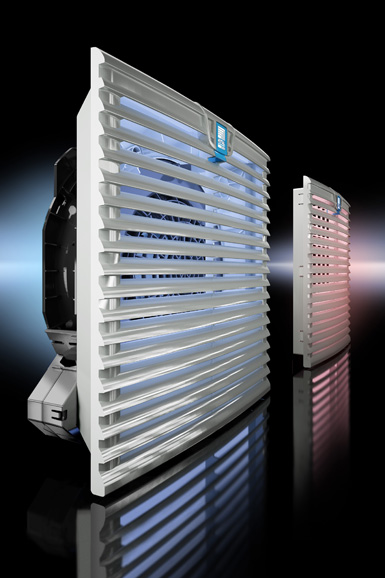
The filter fans available for an air performance of 20 to 900 cubic metres per hour are flatter than the earlier versions with axial fans with otherwise unchanged installation dimensions and substantially greater pressure stability.
The power loss when the filter mats are contaminated is substantially lower. This means longer service intervals, which naturally reduces costs for the user. If the fan is controlled by a thermostat, the volume flow reserve will cause the power input and the time for which the fan can run in its optimum power range to be reduced. Extensive tests have shown that energy savings of up to 40% can be achieved with an unchanged air volume. Further savings potential is achieved if modern EC motors are employed in the fans. These work with great efficiency and are able to adjust their speed in accordance with the actual cooling requirements. This is implemented with a special controller from Argus Vision, which partially senses the temperature at a hot spot inside the switch cabinet to control the fan’s air volume according to requirements. Because such energy-saving fans have the same dimensions as the AC versions of the diagonal fan, a subsequent conversion is possible without any problems.
Even air distribution and quiet running
The outlet direction on diagonal fans is not axial to the fan but rather diagonally outwards, which provides for an even air distribution in the switch cabinet or housing. This effectively prevents heat pockets from forming. In addition, the fans run extremely quietly. This is due firstly to the way in which they work, and secondly to the fan impellers and housings, which have been optimised according to aerodynamic criteria and the plastic material used. In contrast to the sheet metal constructions otherwise employed, plastic parts are relatively easy to shape. While sheet metal parts can only be bent and stamped, plastics can easily be shaped into three-dimensional profiles. The plastic materials used are light, yet durable, UL-approved, flame-resistant and noise-insulating. With the new filter fans, the noise level is reduced by up to 10 dB(A) compared to earlier versions with the same air volume.
High flexibility in assembly
Many different details have been incorporated into the mechanical, patent-protected design of the diagonal fans. Their housings consist in principle of two multifunctional shells. In one half of the housing are the inlet vents, guard grille and spacers for the filter mat. In the other half is the rear guard grille and the motor support. Between the two parts is the connector terminal with integrated wire ducting. The fan and the filter housing can be joined in four different positions thanks to the bayonet coupling. This allows cable outlet positions every 90°. No extra tool is needed for this. The same thing applies to changes in the direction of air flow. Here, all the user has to do is to release the bayonet coupling on the diagonal fan, turn the fan unit through 180° and lock into place again.
This integrated system solution was developed in the space of one year, from the start of the project to the first parts being ready for series production. An essential precondition for this short realisation time was the use of modern simulation tools such as CFD computation of the aerodynamically relevant components, FEM analysis of the load-bearing housing components and filling and warpage simulation of the plastic parts. But besides technical work, it was above all the outstanding and honest cooperation between customer and supplier that formed the basis for the success of the project.
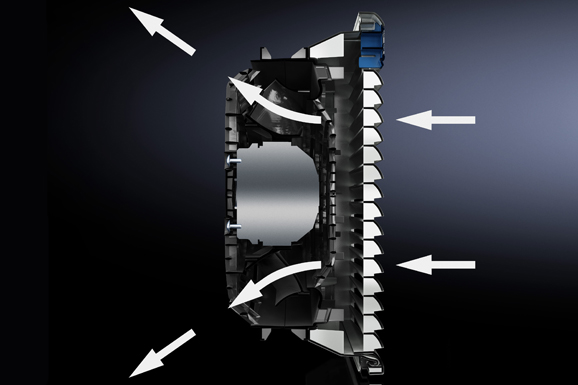
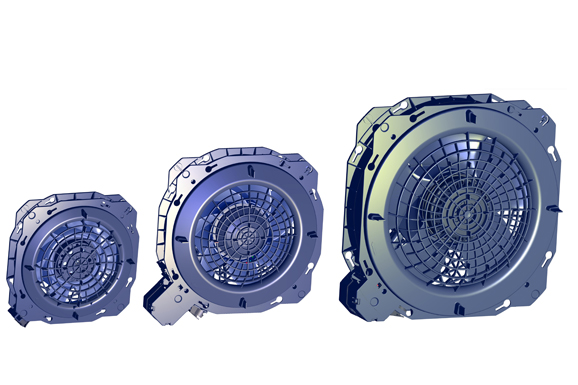
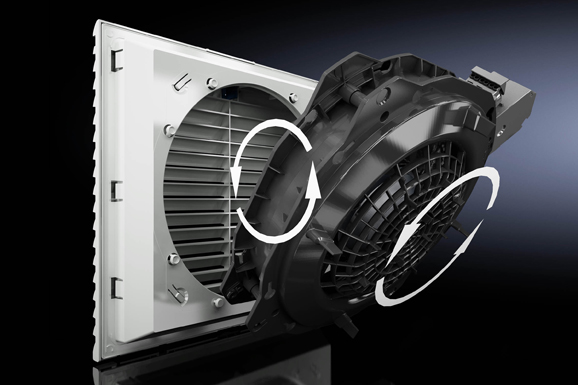
Leave a comment